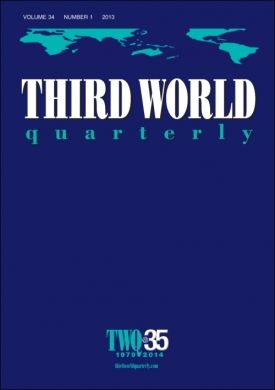A variety of media campaigns focusing on humanitarian aid and development have adopted the so-called ‘girl power’ approach, positioning girls as the new agents of change who can rescue Third World Countries. Two recent research articles examine the issues with this approach, from Western ‘slacktivism’ to the othering of women in Third World countries.
By Carolina Are
The first article, by Ofra Koffman, Shani Orgad and City University’s Rosalind Gill examines the organisations using ‘girl power’ narratives to raise awareness of humanitarian crises.
Koffman, Orgad and Gill argue that NGOs are harnessing the images of girl power to help them move beyond the criticism they received in the 1970s and 1980s for their use of patronising and dehumanising images of starving children.
The authors argue that this new ‘girl power’ approach is in fact sparking a wave of self-oriented media production that focuses inward: on images and text produced by and centred on Northern girls, rather than on the Southern girls the movement is trying to raise awareness of. Koffman, Orgad and Gill criticise this new “selfie gaze” by examining the United Nations’ 2014 ‘Girl Up’ campaign, which prompted American girls to share their daily actions in order to raise awareness of girls in need:
“While engaging in an effort to help others, it is supporters’ own images or images of their lives that are made publicly visible, rather than the recipients who are in need.”
For Koffman, Orgad and Gill, this approach is a form of ‘slacktivism’, as it depoliticises humanitarian issues; the Northern girl who engages with it is not asked to “invest time and effort in learning about the plight of those girls she seeks to help,” or propose ways in which “resources should be spent or how to bring about change”.
Post-Feminist Spectatorship and the Girl Effect: “Go ahead, really imagine her” by Sydney Calkin, Third World Quarterly , Volume 36, 2015 – Issue 4
Similarly to Koffman, Orgad and Gill’s article, Sydney Calkin’s paper examines the misrepresentation of women from the Global South in the narrative of girl power as a humanitarian and development story-telling tool. The article focuses on Nike Foundation’s ‘Girl Effect’ campaign, which promoted public awareness around the positive economic impact of girls’ empowerment on international development.
In the research paper, Calkin argues that gender equality is becoming a popular narrative amongst corporations, who are setting the development agenda by promoting it as a smart business choice. She describes it as “post-feminist political discourse manifested through post-humanitarian styles of communication”, and argues that the attempt to raise public awareness of global girl power still tries to “rescue ‘Third World girls’”, in fact othering them similarly to 1970s an 1980s humanitarian aid campaigns. She argues that:
“[T]his discourse reinstates a cultural binary whereby the identities of empowered, Western woman and disempowered Third World women are constructed in opposition to, but are simultaneously constitutive of, each other. This relationship is antithetical to feminist solidarity because it closes off consideration of global structural inequalities that perpetuate women’s subordination and instead celebrates a narrow, economistic notion of economic empowerment and modernisation-as-Westernisation.”
Social Othering
As we explored in a previous post, the hopes for new technologies and social media to revolutionise the humanitarian sector need to be recalibrated. Even in terms of raising awareness, papers like the ones above seem to show that social media is replicating the attitudes seen in ‘old media’ in the past: a Western-centric narrative. Although social networks have been giving more people a voice, so far these voices seem to focus on those we already hear from.






